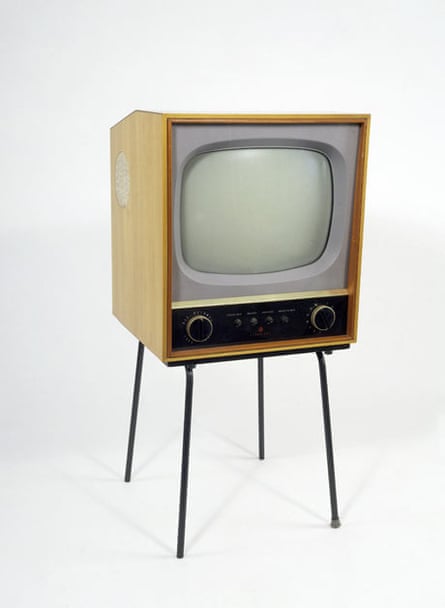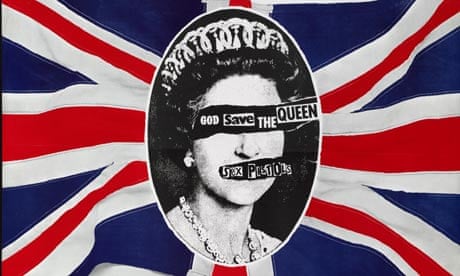In 1948, still reeling from the war, Britain steeled itself and cobbled together the first Olympic games of the postwar era. The London Olympics were known as the "austerity games", and yet proved a triumph of resourcefulness. It's with this moment that the Victoria & Albert museum begins its new survey exhibition, British Design 1948–2012 – an irresistible conceit, as London counts down to its second Olympics.
The other key moment in British design was the Festival of Britain in 1951. Then, Britain finally grasped the modernist nettle, seeking to drive manufacturing with a genuine design culture; now, a Britain that is renowned for its design (and not its manufacturing) is about to embark on an Olympic celebration that feels more like the culmination of something than its beginning.
The austerity may be back, but it is difficult to overstate the scale of the political shift that has occurred. The Festival of Britain was the brainchild of a Labour government forging the welfare state; the 2012 Olympics are presided over by a coalition government dismantling what's left of it. Some of this show rubs our noses in that polarity. Here is Jock Kinneir and Margaret Calvert's 1957 design for the national road signage system, going on show the week after it was announced that roads may be privatised. Here are London county council's ambitious postwar social housing programmes, whose corollary today are the "luxury" apartment blocks thrown up by private developers. Then it was the technological finesse of the 300ft Skylon tower; now we have the oligarchical vanity of the Mittal-Orbit structure on the Stratford site, by Anish Kapoor. The exhibition illustrates not just the history of British design, but of British politics.

In a show of such scope, there is an understandable tendency to fall back on the greatest hits. On one level, British Design is a sequence of cliches that we are familiar with. The 1950s are all spindly furniture and molecular patterns; the 60s are about two Minis (a car and a skirt); and the 70s careen from punk's safety pins to Concorde (the only piece of technology in the show that hasn't been surpassed). The 80s are represented by Peter Saville's album covers for Factory Records and a little piece of Manchester's Hacienda nightclub (whose designer, Ben Kelly, also designed this exhibition). Meanwhile, Cool Britannia and the obsession with branding takes care of the 90s, here represented by objects from Pharmacy, the restaurant Damien Hirst opened in London in 1998. (Always more about money and PR than it was about art or design, this episode sits uncomfortably with the rest of the show. But then the "real" design of the period is not much better: if Michael Young's aluminium and vinyl Magazine sofa, which belongs in a tacky nightclub's VIP area, is the pinnacle of 1990s furniture design, the decade itself was not a high point.)
There is little in the way of revisionism or controversy here; but if the objects are overfamiliar, the subtexts running through them are less so. Avoiding a simplistic chronology, the curators have chosen to define the characteristics of British design thematically. The middle section of the show focuses on subversion. From the late 1960s, a younger generation of creative talent fostered in the British art school system began reacting against the paternalistic impulses of the postwar rebuilders, swapping consensus for dissent. From pop music to fashion, the alternative was suddenly the answer. Samples here include David Bowie and the outlandish outfits of glam rock, the Sex Pistols' anti-aesthetic, Ron Arad and Tom Dixon's salvaged-metal furniture. You could throw in the architecture of Zaha Hadid who, before she was a star, was a kind of one-woman subculture. Hadid spent decades in the wilderness, failing to get her deconstructivist designs built. This anti-authoritarian streak, by turns camp and punk, has become one of the defining features of Britain's cultural self-image; it's a spiky brand identity that Wolff Olins' Olympic logo has attempted to make official.
The role recession has played in shaping Britain's design identity is one of the more revealing themes. The Festival of Britain was conceived as a means of stimulating the economy, while punk and the creative salvage scene were born of the economic crises of the 1970s and early 80s. In 1986, James Dyson had to take his famous vacuum cleaner design to Japanese manufacturer Apex, because no recession-weakened British manufacturer would take it on. Industrial decline is a bigger story, of course, and yet many of the innovations of the last three decades have been responses to it. When the Sinclairs and Amstrads of Britain's personal computer industry could no longer compete with America and Japan, they moved from software to hardware. Today, British computer game designers are lead players in an industry that's now worth more than Hollywood, responsible for such successes as Tomb Raider and Grand Theft Auto.
How does the story end? What does a show that is part of the flag-waving runup to the Olympics tell us about British design today? In the end, not that much, partly because it is drawn mainly from the V&A's own collection, and museum collections are weakest when it comes to contemporary artefacts.
The last decade is much richer than you would think from the few pieces shown here; as the show approaches the present, the narrative threads that run so richly through the rest – of tradition versus modernity, of youth versus authority – begin to fray. The Olympic buildings are here, as well as a plastic chicken coop manufactured by Omlet in Britain (a huge commercial success). The latter at least raises the question of whether manufacturing might start to return from Asia, now the costs of outsourcing are rising.
Troika's Falling Light installation (2010), a programmed chandelier that precipitates light like raindrops, is probably the most representative example of contemporary British design. Neither a product nor an artwork, this is innovative for its own sake and was made by a group of designers from France and Germany living in London. It shows us that the boundaries of design are dissolving, and that it is time for us to dispense with the notion of "British design" altogether. The UK's design scene is now nothing if not international, and London, in particular, is a magnet for talent from all over Europe. The question is, once the Olympics are behind us (and we have another recession to kick against), how will design in Britain reinvent itself again?

Comments (…)
Sign in or create your Guardian account to join the discussion